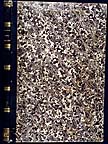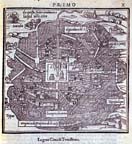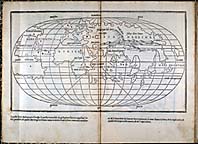



Isolario, meaning The Island Book or The Book of Islands, describes the islands of the world with their lore, myths, cultures, climates, situations, and history. Its author, Benedetto Bordone, was the last of the great manuscript illuminators and a much admired miniaturist and map engraver. The work, an example of a cartographic genre popular in Italy during the fifteenth and sixteenth centuries, is intended as an illustrated guide for mariners.
Isolario contains an oval depiction of the world (a type of map invented by Bordone) that shows a very distorted "Mondo Novo," displaying only the northern regions of South America. North America, depicted as a large island, is labeled "Terra del Laboratore," or "Land of the Laborer," perhaps a reference to the enslavement of its indigenous peoples. The book also contains a record of Pizarro's conquest of Peru, the earliest known printed account of this event.
Of particular interest in this work are numerous woodcut maps, twelve of which relate to America. One map displays a plan of "Temistitan" (Tenochtitlán, modern Mexico City) before its destruction by Cortez. Also of interest is a map of "Ciampagu," the earliest known European-printed map of Japan.


 Exhibit Home Page
Exhibit Home Page  New World
Books
New World
Books